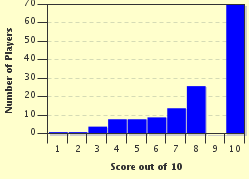
Tales of Ancient Capitals Trivia Quiz
Many times in history the major economic or religious center of a region became its capital. Let's see if you can match the ancient capital to the area or people it served.
A matching quiz
by ponycargirl.
Estimated time: 4 mins.
